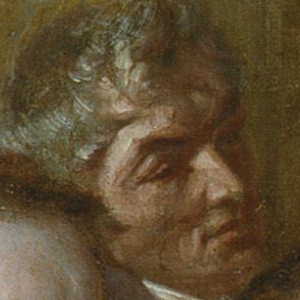- Samuel Bowly
Infobox Person
name = Samuel Bowly

image_size = 240px
caption = Bowly at the 1840 Anti-Slavery conference [http://www.npg.org.uk/live/search/portrait.asp?mkey=mw00028# Knibb and Scoble at The Anti-Slavery Society Convention, 1840] , byBenjamin Robert Haydon at the National Portrait Gallery]
birth_name =
birth_date = 1802
birth_place =Cirencester
death_date = 1870
death_place =Gloucester [DNB ]
death_cause =
residence =
nationality =English
other_names =
known_for = Slavery abolitionist, Temperance
education =
employer =
occupation =
title =
term =
predecessor =
successor =
party =
boards =
spouse = Miss Shipley & Mrs Cottrell
children =
parents =
relatives =
religion =
website =
footnotes =Samuel Bowly (1802–1884) was an English slavery abolitionist and temperance advocate.
Biography
Bowly, son of Mr. Bowly, miller at Bibury,
Gloucestershire , was born inCirencester on23 March 1802 . During his youth he had a sound business training under his father. In 1829 he removed from Bibury to Gloucester, and commenced business as a cheese factor.He became chairman of many local banking, gas, railway, and other companies, and for the last twenty years of his life he was looked upon as a leader in commercial circles and affairs. In the agitation against the
Corn Laws he took a prominent part, and loyally supported Messrs. Cobden and Bright. It was one of his endeavours to give the people cheap and universal education, and he was not only one of the founders of the British and ragged schools in Gloucester, but a consistent advocate of a national system. Like his father, he belonged to theSociety of Friends ; he was a faithful though courteous and fair supporter of disestablishment.Bowly took an active part in the anti-slavery agitation, and by his powerful appeals completely beat
Peter Borthwick , the pro-slavery lecturer, off the ground. He was one of the deputation,14 November 1837 , which went to Downing Street to have an interview withLord Melbourne about the cruelties exercised towards the slaves under the seven years' apprenticeship system, and in the following year took an active part in the formation of theCentral Negro Emancipation Committee , which was ultimately instrumental in causing the abolition of the objectionable regulations. He is pictured above at the 1840 International Anti-Slavery conference in London.However it was his advocacy of temperance that made him best known. It was on
30 December 1835 that he signed the pledge of total abstinence, and formed a teetotal society in his own city. One of his earliest missions was to the members of his own religious society, undertaken in company with Edward Smith of Sheffield, throughout Great Britain and Ireland. During his later years he held frequent drawing-room meetings. As president of theNational Temperance League , as president of the Temperance Hospital from its foundation, and as a director of theUnited Kingdom Temperance and General Provident Institution , he was able to draw the attention of scientific men to the injurious effects of alcohol on the human system. On behalf of the National Temperance League he attended and addressed 107 meetings during the last year of his life, travelling many hundreds of miles.The eightieth anniversary of his birth was celebrated in
Gloucester in 1882, and he died in that city on Sunday,23 March 1884 , the eighty-second anniversary of his birthday. He was buried in the cemetery on 27 March, when an immense concourse of people, both rich and poor, attended the funeral.He married, first, Miss Shipley, daughter of Mr. John Shipley of
Shaftesbury . His second wife was the widow of Jacob Henry Cottrell of Bath, especially known for his connection with the Rechabite Friendly Society.Works
# "A Speech delivered 1 Oct. 1830 at a meeting to petition Parliament for the Abolition of Negro Slavery" 1830
# "Speech upon the present condition of the Negro Apprentices" 1838
# "A Letter to J. Sturge on the Temperance Society and Church Rates, by L. Rugg, with a reply by S. Bowly" 1841
# "An Address to Christian Professors" 1850
# "Total Abstinence and its proper Place" 1863References
Wikimedia Foundation. 2010.
